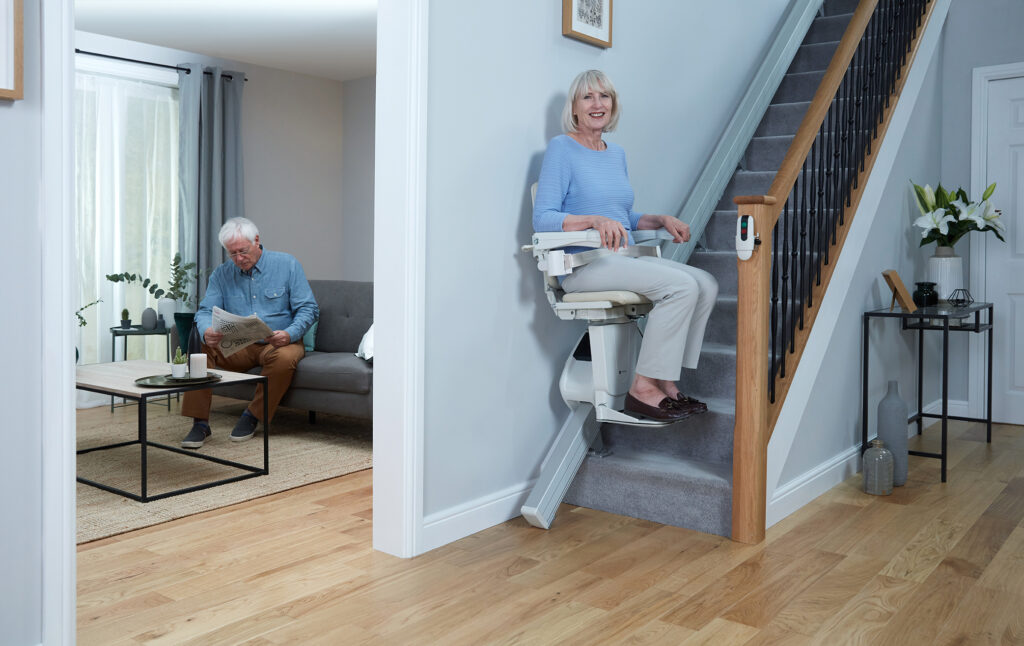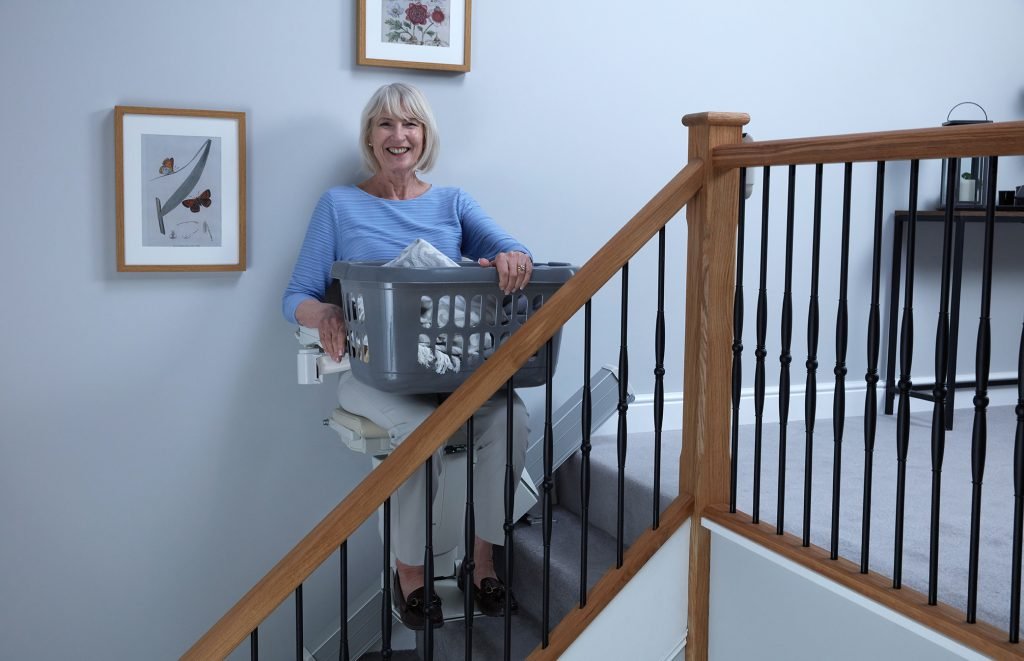It may come as a surprise, but in the UK, there are no stipulated minimum width requirements for domestic staircases under the building regulations. While specific width requirements exist for staircases designed for disabled access or functioning as direct fire escapes, staircases in standard homes not purpose-built with disabled access in mind might not always be wide enough to fit a stairlift.
While we can fit stairlifts on most staircases, the user’s dimension, when seated, will dictate whether a staircase is wide enough.
Minimum Width Requirements for Stairlift Installations
For properties built after 2010, a minimum staircase clearance of 800mm is standard, typically providing enough room for stairlift installation. However, whether this space is adequate can depend significantly on the user’s needs.
Narrowest Staircase Dimensions for Stairlift Installation
Generally, a staircase must be at least 700mm (about 27.5 inches) wide to accommodate a stairlift without issues. Despite these guidelines, homeowners with narrower staircases need not worry. We’re in 2024, and solutions are more accessible than ever.

Challenges and Creative Solutions for Narrow Staircases
Even with narrow staircases, most can accommodate a stairlift, though slimmer stairs limit the selection of stairlift models, often leading to higher costs. Stairlift manufacturers have responded to this challenge with inventive solutions. For instance OTOLift Smart Air and Platinum Ultimate offer models suitable for curved, complex, and narrow staircases.
Understanding the Core Issue
When seated in a stairlift, the distance from the user’s spine to their knees (or feet, if extended) can surpass the staircase’s width, making installation challenging. Solutions focus on compact designs and foldable components to enhance space utilisation and efficiency.
Possible Solutions
Compact stairlift designs feature foldable armrests, seats, footplates, and slender rails, allowing the stairlift to tuck away neatly when not in use. This setup benefits the user and ensures the staircase remains accessible to other household members. However, these solutions only partially address the challenge of navigating narrow staircases.
Ingenious Technical Solution: The Flow X Stairlift
Dutch engineering excellence is showcased in Thyssenkrupp’s Flow X stairlift, an innovative solution for narrow curved staircases. This bespoke stairlift is tailor-made to fit the precise dimensions of your slender staircase.
The Flow X features sophisticated software programmed to align with your staircase’s unique contours, mapping every twist and turn. As the seat component approaches a curve, it cleverly swivels the seat, angling the user’s knees 45 degrees downwards, thus minimising the gap between the knees and the opposite stair wall.

Considerations and Cost
Such cutting-edge solutions come with higher price tags but stand out as the optimal choice for narrow curved staircases or situations where users cannot perch or their spine-to-knee/toe measurement exceeds the staircase’s width. The Flow X can accommodate staircases as narrow as 640mm in width but has a maximum weight capacity of 19.68 stone (125 kg).
While UK building regulations might not mandate minimum widths for domestic staircases, various solutions exist to address the challenges of narrow staircases. Whether through compact and foldable designs or innovative engineering marvels like the Flow X, there are numerous ways to ensure stairlift installation is possible even in the tightest of spaces. The key is to assess your specific needs and consult a stairlift expert to find the best solution for your home.



